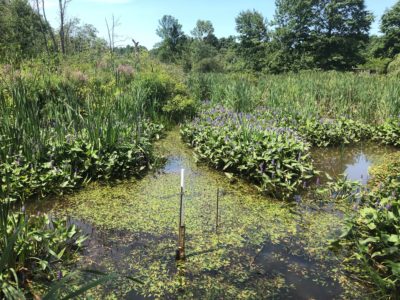
Controls on Nitrogen Fluxes to Estuaries
Controls on Nitrogen Fluxes to Estuaries
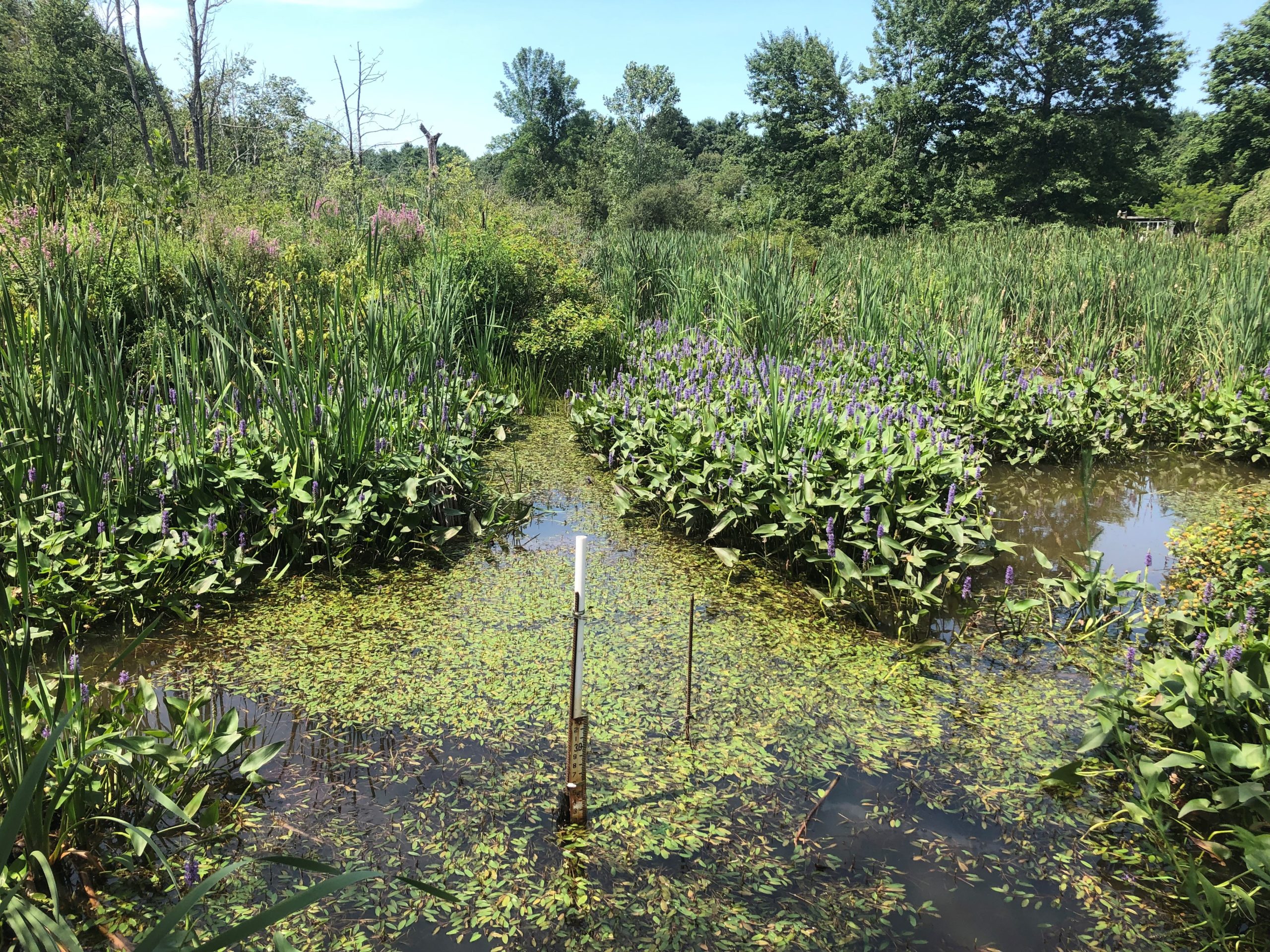
Credit: Andrew Robison
Despite expanded suburban development, nitrogen fluxes to the estuary have remained steady since the early 1990s. River flow, which is becoming more variable along with climate, largely determines nitrogen retention. Imbalances between nutrient supply and demand reduce nutrient regulation during higher flows. Work at PIE LTER helped lead to a generalized framework for modeling material fluxes at river network scales – the River Network Saturation framework. Knowing when and where river networks become saturated for different constituents allows scientists and managers to better extrapolate to broader spatial scales, clarify the role of rivers in continental element cycles, and identify policy priorities.
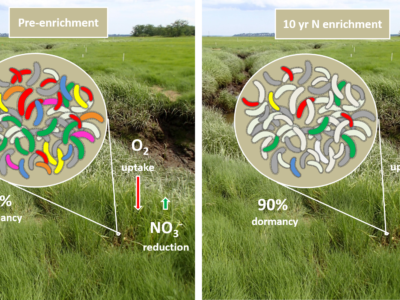
Microbial Dormancy and Diversity
Microbial Dormancy and Diversity
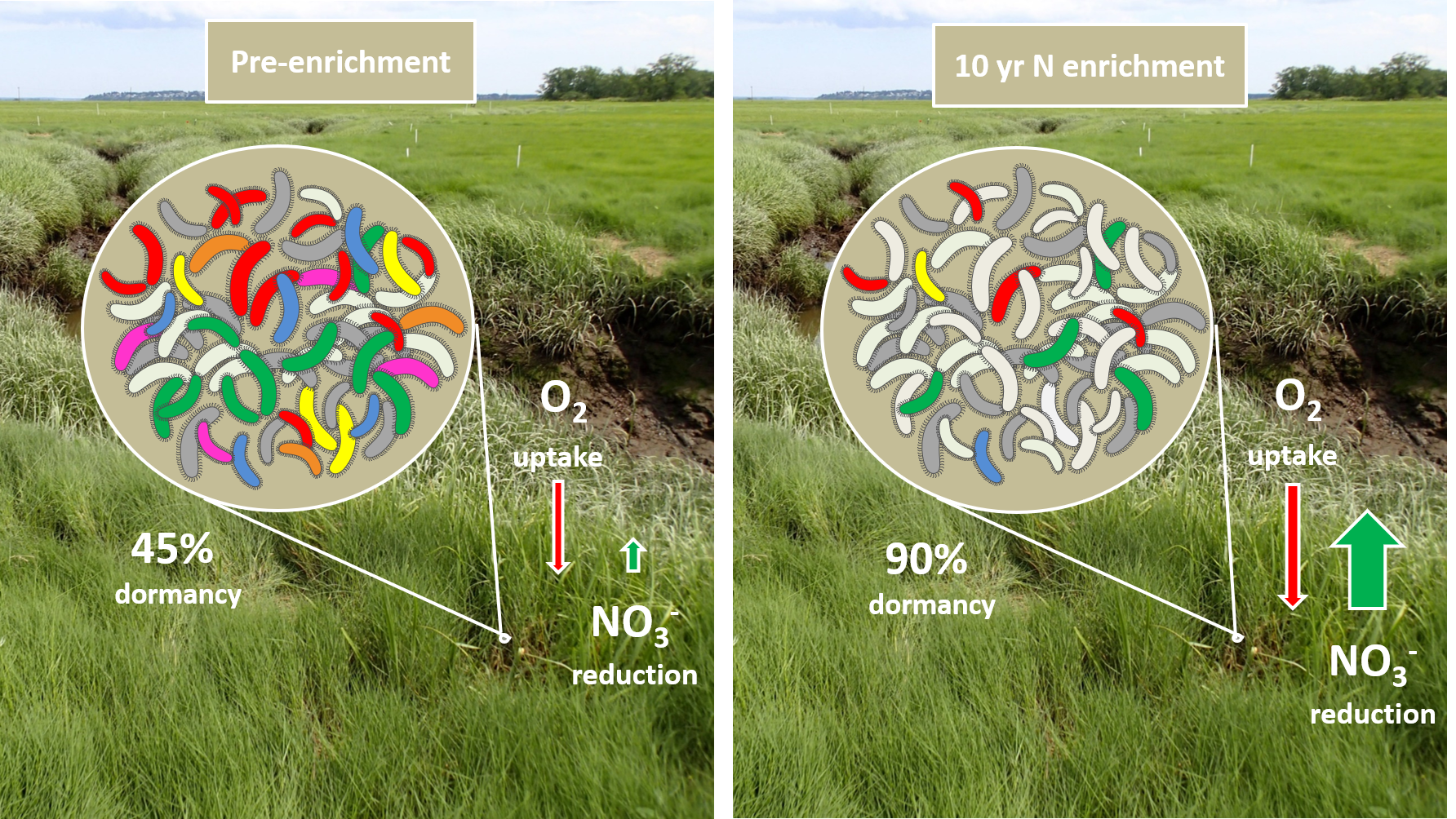
Credit: Ashley N. Bulseco et al
A decade of nutrient enrichment significantly increased rates of oxygen uptake and nitrate reduction in sediment. Surprisingly, the proportion of the dormant microbial population increased (overall composition of the microbial community remained unchanged). This response to a perturbation may reflect the microbial community’s strategy for maintaining diversity in a highly dynamic environment.
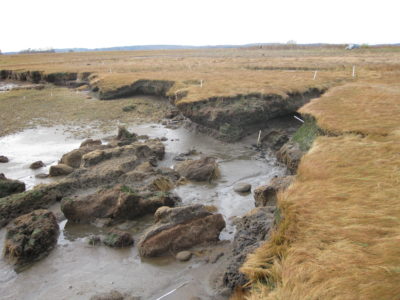
Sea-level Rise and Storms are Altering Salt Marshes
Sea-level Rise and Storms are Altering Salt Marshes
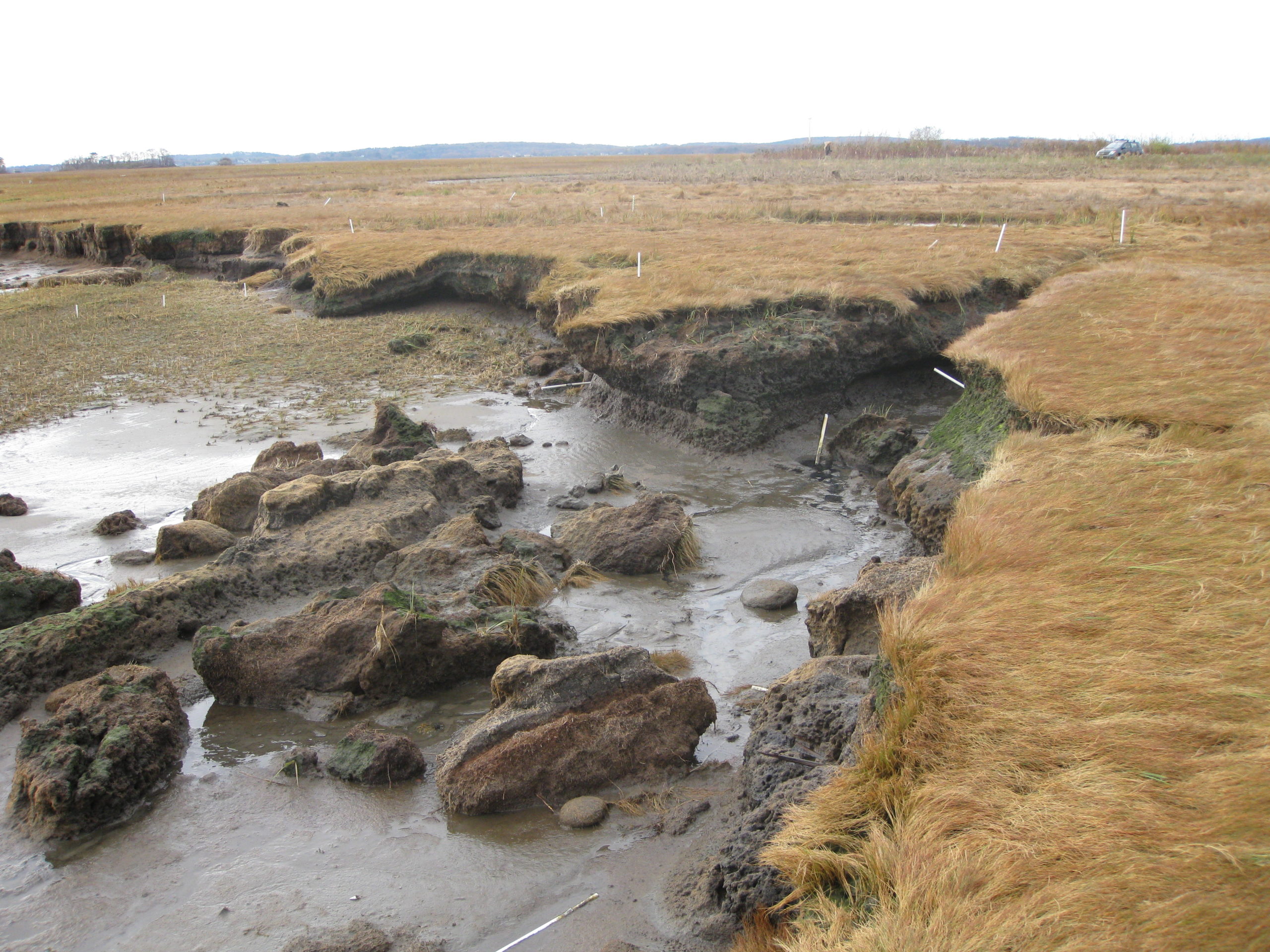
Credit: Sergio Fagherazzi
For marshes where rates of sea level rise exceed about 3 mm/year, external sediment supply is critical to marsh survival. Although riverine sediment inputs to the Great Marsh are low, PIE LTER research has shown that marsh edge erosion during moderate intensity storms currently supplies enough sediment to maintain the marsh platform. However, with accelerating sea level rise, this will not be the case. Landscape scale studies of spatial and temporal changes (rather than relying on point measurements of platform accretion) provide more reliable information and allow better predictions to be made about future changes. Plum Island LTER is developing GIS methods to make more statistically robust comparisons between historical and current maps.
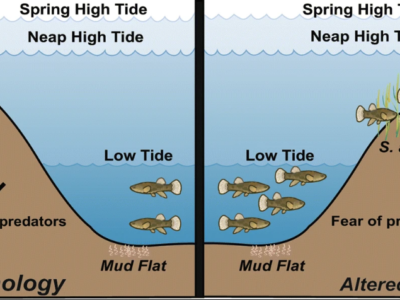
Consumers Respond Unexpectedly to Nutrient Enrichment
Consumers Respond Unexpectedly to Nutrient Enrichment

Long-term nutrient enrichment causes S. alterniflora habitat to collapse into the creek, limiting access to high-marsh invertebrates. Fish use more energy to access the high marsh which reduces trophic efficiency. In addition, these cracks also create crevasses where fish predators, such as American eel, can hide and feed on mummichog.
Courtesy of the Integration and Application Network, University of Maryland Center for Environmental Science (ian.umces.edu/symbols/).
Credit: Figure 7 in: Nelson, J.A., Johnson, D.S., Deegan, L.A. et al. Feedbacks Between Nutrient Enrichment and Geomorphology Alter Bottom-Up Control on Food Webs. Ecosystems 22, 229–242 (2019). https://doi.org/10.1007/s10021-018-0265-x
For the first six years of an ongoing 13-year nitrate addition experiment in tidal creeks, benthic algae, invertebrate prey, and a small fish, the mummichog, showed a classic positive bottom-up response to added nutrients. However, after six years, creek banks began to collapse and mummichog abundance in fertilized creeks declined relative to reference sites, likely because the changing shape of creek channels cut off access to food resources on the marsh platform. Amphipods in fertilized creeks also developed a much higher incidence of trematode parasites, which made them more vulnerable to predation.










